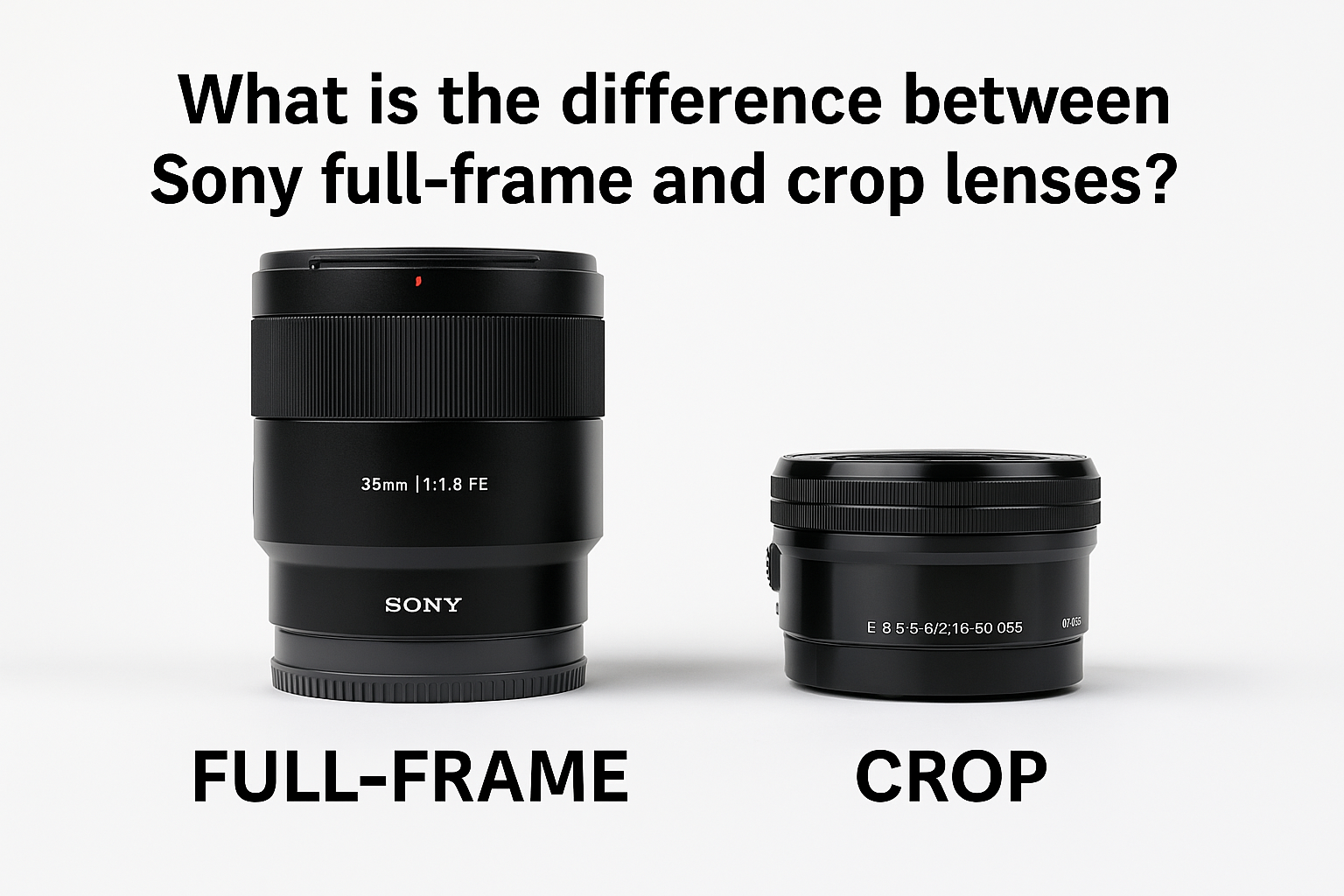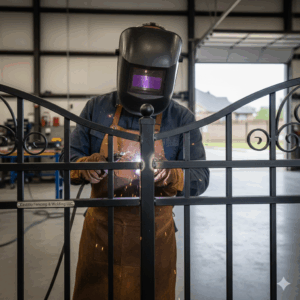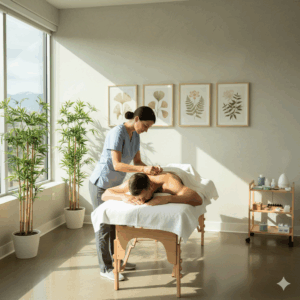What is the Difference Between Sony Full-Frame and Crop Lenses?
Understanding the differences between full-frame and crop sensor lenses is essential for photographers and videographers when selecting the best gear for their creative needs. If you’ve ever wondered how Sony full-frame vs crop lenses affect your images, performance, and budget, this guide will walk you through everything you need to know.
Introduction: Why Sensor Size and Lens Format Matter
In photography, the sensor size inside your camera has a significant impact on image quality, field of view, and overall performance. Sony offers both full-frame (also known as 35mm format) and APS-C (crop sensor) cameras. With each sensor type comes a corresponding lineup of lenses—full-frame and crop lenses—which are optimized for their respective formats.
This article breaks down the core differences between Sony full-frame and crop lenses, how they impact image creation, and how to choose the right one for your shooting style and goals.
H2: What Are Full-Frame and Crop Sensors?
H3: Full-Frame Sensors
A full-frame sensor is equivalent in size to a 35mm film frame—36mm x 24mm. These sensors are typically found in Sony’s Alpha 7 and Alpha 9 series. Full-frame sensors allow for:
- Better low-light performance
- Shallower depth of field
- Higher dynamic range
- More background blur (bokeh)
H3: Crop Sensors (APS-C)
Sony’s crop sensor cameras use the APS-C format, which is smaller than a full-frame sensor, measuring about 23.5mm x 15.6mm. This results in a crop factor of approximately 1.5x.
Implications of this crop factor:
- A 50mm lens acts like a 75mm lens in terms of field of view
- Less background blur
- More reach with telephoto lenses
H2: Sony Full-Frame vs Crop Lenses: Key Differences
H3: Lens Mount Compatibility
Both full-frame and crop sensor Sony cameras use the E-mount system. However, lenses are designated as either:
- FE lenses (Full-frame E-mount)
- E lenses (APS-C E-mount)
H3: Field of View
Using a full-frame lens on a crop sensor body changes the field of view. The image is effectively “zoomed in” due to the crop factor, which can be beneficial for wildlife and sports photography.
H3: Image Quality and Depth of Field
Full-frame sensors paired with FE lenses offer better performance in low light, reduced noise, and more control over depth of field. On the other hand, crop sensor setups are often more affordable and compact.
H3: Size and Weight
Crop lenses are generally smaller and lighter, making them ideal for travel or vlog setups. Full-frame lenses tend to be heavier but provide superior optical performance and build quality.
H3: Price and Value
Full-frame lenses are usually more expensive, reflecting the higher quality glass and build. Crop lenses offer better value for beginners or hobbyists.
H2: Mixing and Matching Lenses
H3: Can You Use Full-Frame Lenses on Crop Cameras?
Yes! Full-frame lenses are fully compatible with Sony APS-C bodies. However, the 1.5x crop factor will apply. For example, a 24mm FE lens will behave like a 36mm lens on a crop sensor body.
H3: Can You Use Crop Lenses on Full-Frame Cameras?
Technically yes, but with limitations. When using an APS-C lens on a full-frame camera, the camera automatically switches to “crop mode,” reducing image resolution.
H2: Real-Life Examples and Use Cases
H3: Portrait Photography
Full-frame setups like the Sony A7 III with an 85mm FE lens offer stunning bokeh and image sharpness. On a crop sensor, you’d need a 50mm lens to get a similar portrait look.
H3: Travel Photography
For travelers, a compact APS-C body with a versatile 18-135mm lens is light and versatile. It’s easier to carry compared to full-frame gear.
H3: Videography
Crop sensor cameras are often chosen for vlog-style content due to their portability. Pairing these with affordable options from the Samyang Lens collection ensures quality footage without breaking the bank.
H2: Pros and Cons
Full-Frame Lenses
Pros:
- Superior image quality
- Greater control over depth of field
- Better low-light performance
Cons:
- Heavier and bulkier
- More expensive
Crop Lenses
Pros:
- More compact and lightweight
- Cost-effective
- Great for casual and travel photographers
Cons:
- Reduced low-light performance
- Limited depth of field
H2: FAQs
Q1: Are Sony full-frame lenses worth it for beginners?
If budget permits and long-term growth is a goal, starting with a full-frame system can be a smart investment.
Q2: Can I mix crop and full-frame lenses?
Yes. Sony’s E-mount system offers flexibility, but be mindful of the crop factor when mixing formats.
Q3: Are there affordable full-frame lenses?
Yes, brands like Samyang offer excellent and budget-friendly options in the full-frame category.
Q4: Where can I learn more about lens options?
Check out this guide to camera lenses in Pakistan for more insights.
Conclusion: Choosing the Right Lens Format for Your Needs
Understanding the Sony full-frame vs crop lenses debate helps you choose the right gear depending on your budget, photography goals, and preferred shooting style. While full-frame lenses deliver superior performance, APS-C lenses are compact, cost-effective, and surprisingly capable.
Whether you’re a seasoned photographer or a beginner exploring new styles, exploring options from brands like Samyang Lens can give you the versatility and value you need to create stunning visuals.
Call to Action
What’s your experience with full-frame or crop lenses? Leave a comment below or share your favorite lens combo. Don’t forget to explore your lens options and get inspired by what suits your style best!








